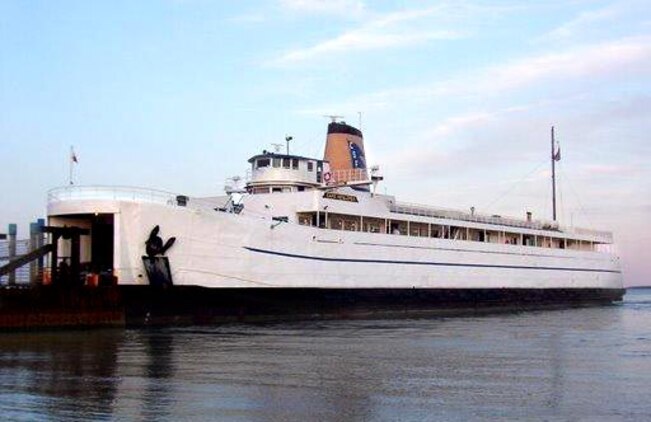By Sgt. Paul Kane | | October 26, 2006
WASHINGTON --Ships, like men, can sometimes pass without us discovering their stories.
War veterans frequently keep their own counsel and stories to themselves. But it is especially true of ships that have only historians to give a voice to their stories and legacy.
LST-510, formerly of the U.S. Navy, is one such ship with a proud past.
LST-510, now the USS Cape Henlopen, works as a car and passenger ferry for the Cross Sound Ferry. Leap back in time to Sept. 1943 and World War II.
Combat and transport ships were being built and rolled into action so fast that time did not always permit a naming, and a number had to suffice. Hence, LST (“Landing Ship for Tanks”) 510.
Built by a Great Lakes shipyard, within just three days of being commissioned she proceeded down the Mississippi River to New Orleans. There U.S. Navy Lt. George P. Andrews took command.
In March 1944, LST-510 was loaded for bear and part of a 64-ship convoy crossing the hazardous waters of the North Atlantic. She carried over 600-tons of ammunition critical to the war effort in Europe. A 150-ton specialized tank landing craft was gerry rigged to her deck. She weighed anchor and riding low in the water sailed for England.
Weather and log records show that over a three-day period, the ship endured winds that dashed 50-foot swells over her bow, sleet storms that froze her decks, dense fog, and the company of unforgiving icebergs.
But most deadly to the LST-510 and her high explosive cargo were the U-boats.
A week into the crossing, a wolf-pack of German submarines hit the convoy full force. Four cargo ships took torpedoes, one so close that the explosion of its hull threw debris the 400 yards between them onto the port side of LST-510.
“We still find remnants below her deck from when she was a hospital off Normandy,” said one sailor that has worked on the ferry for more fours years and is a U.S. Navy veteran, “I’m proud to be aboard her.”
War veterans frequently keep their own counsel and stories to themselves. But it is especially true of ships that have only historians to give a voice to their stories and legacy.
LST-510, formerly of the U.S. Navy, is one such ship with a proud past.
LST-510, now the USS Cape Henlopen, works as a car and passenger ferry for the Cross Sound Ferry. Leap back in time to Sept. 1943 and World War II.
Combat and transport ships were being built and rolled into action so fast that time did not always permit a naming, and a number had to suffice. Hence, LST (“Landing Ship for Tanks”) 510.
Built by a Great Lakes shipyard, within just three days of being commissioned she proceeded down the Mississippi River to New Orleans. There U.S. Navy Lt. George P. Andrews took command.
In March 1944, LST-510 was loaded for bear and part of a 64-ship convoy crossing the hazardous waters of the North Atlantic. She carried over 600-tons of ammunition critical to the war effort in Europe. A 150-ton specialized tank landing craft was gerry rigged to her deck. She weighed anchor and riding low in the water sailed for England.
Weather and log records show that over a three-day period, the ship endured winds that dashed 50-foot swells over her bow, sleet storms that froze her decks, dense fog, and the company of unforgiving icebergs.
But most deadly to the LST-510 and her high explosive cargo were the U-boats.
A week into the crossing, a wolf-pack of German submarines hit the convoy full force. Four cargo ships took torpedoes, one so close that the explosion of its hull threw debris the 400 yards between them onto the port side of LST-510.
“We still find remnants below her deck from when she was a hospital off Normandy,” said one sailor that has worked on the ferry for more fours years and is a U.S. Navy veteran, “I’m proud to be aboard her.”




No comments:
Post a Comment